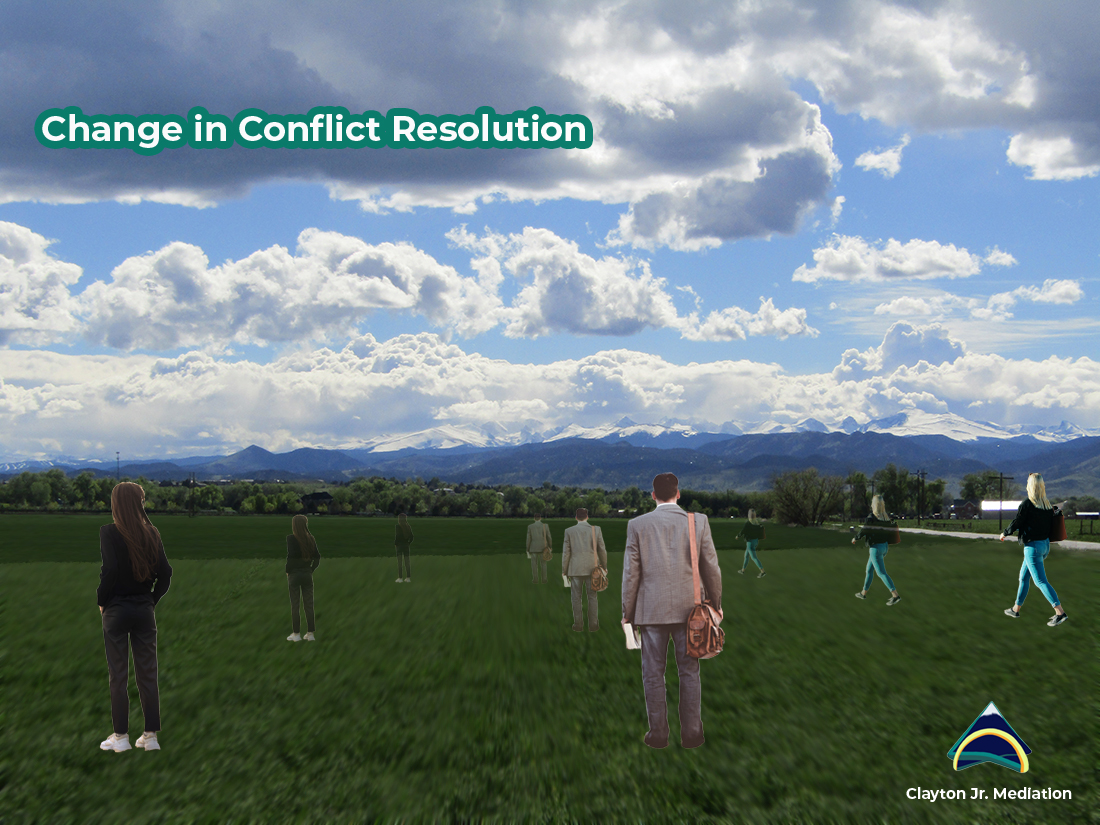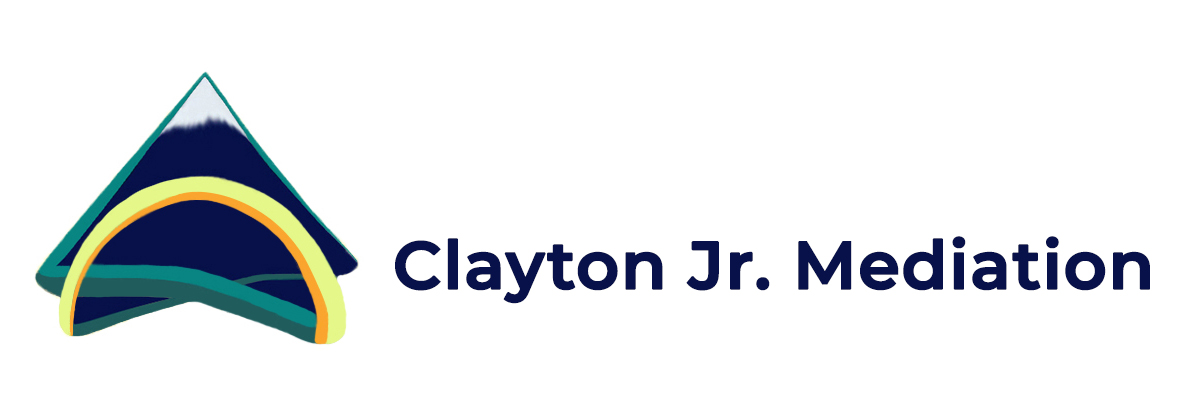
One fascinating aspect of conflict resolution to examine and deliberate on is change. How compelling it is that change shares such an intimate and influential relationship with disputes and the processes often laid out to resolve them. The impact that shifting circumstances have on conflict resolution appears to be multifaceted. It might be wondered, “what kind of valuable insights may be gained from better understanding change in dispute resolution?” The writing here employs this question as a guide — in doing so, important acknowledgements and assertions are provided that lend support to effective communication and agreement making. Additionally, certain practical conflict resolution strategies are uncovered as well as theoretical depth revealed. To that end, it may be appropriate to call this kind of work an “adventure”! As change in conflict resolution is investigated in this way, we can indeed avail many principal discoveries along the way.
Upon surveying change in the process of dispute resolution, we might look broadly at certain procedural, substantive, and emotional factors that tend to create altercations. For example, practitioners (neutral third-party facilitators) generally work with parties in dispute to map out key administrative deadlines, policies, laws, ideas, goals, feelings, and perspectives. These are just a few examples but it is apparent how such factors can be highly influential. Furthermore, several of those outlined change quite frequently during the process of conflict resolution. While a law is less likely to change, emotional responses, group rationale, and obligations and deadlines may be more typically in flux during conflict resolution. Other relevant and common factors like differing values and interests can also shift in significant ways when it comes to individuals, families, organizations, and other groups.
Similarly, several reasons for changing perceptions or demeanor within a given dispute may be touched on as well. On one hand, sometimes a party or parties change viewpoints based on new information gathered. On the other hand, seeking advice or counsel from family members and professionals are fitting examples of relevant influential and causal events. Major life events can also radically change certain aspects of a conflict. For instance, the sudden effects of job loss or health related concerns may generate drastic change in the many factors or matters that make up a dispute.
Having a breadth of experiences can be helpful for both practitioners and parties with regards to meaningfully addressing the types of changes mentioned in the preceding paragraphs. Put another way, wisdom gained from past experiences is broadly advantageous concerning our response to the changeful aspects mentioned. There is additionally great benefit in remaining steadfast when dispute related factors change. Reflecting on the practice of conflict resolution may reveal that particular circumstances can give rise to distinct tendencies and altering factors. When accounting for shifts in conflict, getting to know parties is critical given that a practitioner may better anticipate or account for subsequent reactions across the table when a specific change takes place. However, it is also imperative to stay open to the many wildcards of conflicts, and life in general, when assisting others with resolution practices.
Another chief acknowledgement to the discussion at hand is that change can be linked to “adaptation” or “flexibility” in dispute resolution. Perhaps it is agreeable that “going with the flow” can be more difficult when in conflict. For instance, hard-line actions, sentiments, or counter-offers can develop quickly without an alternate option provided in many cases. This can present formidable barriers to resolution such as high running emotions and actions in response to those kinds of changes, especially concerning other parties across the table. We may think of it this way — parties are not always positively receptive towards perceived threats or mistrust, and practitioners may be limited in their ability to respond effectively in such an environment. Yet, maintaining the capacity to be flexible often serves a practitioner very well even amidst these challenges. We might reasonably posit that it is a third-party neutral facilitator’s fundamental duty to be impartially adaptive and responsive to change. Developing a mindful practice, in particular having a healthy degree of humility, is one antidote to the constraints resulting from shifts as discussed. Further, there is something to be said about understanding that adaptability is a work in process — holding the right demeanor and discernment founded on keeping the doors open should be sought out continuously.
It is somewhat mysterious how a certain party or group may respond to the aforementioned types of changes in disparate ways. What’s more, is the contrast in how each party may desire change to take place (or not to occur). While some folks are waiting to see if change will happen, others might take action to cause events to happen or to stall them from happening. When two or more parties find themselves going in incompatible directions due to a shift of some kind, it can create difficulty for effective resolution to take place. Accounting for respective views neutrally and establishing a mood of candid inquiry with parties can offer a chance to reset the situation to that end. This may begin with questions directed at determining what changes are most important to particular individuals and groups while gradually moving dialogue towards specific expectations and goals. When a practitioner encourages creating space to evaluate things openly, either individually or as a group, critical thinking and awareness become possible. Inviting folks to take a step back and to look at change in this way is vital. In countless experiences, I’ve noticed this to be well-received, and that it is an easily understood process that can bring about ease, clarity, and creativity. Checking-in, outlining options, and bringing forward brainstorming sessions with a patience approach often goes a long way when it comes to mitigating burdensome matters due to the shifting factors of conflict. In an earlier work, I introduced the notion of breaking points which may be fitting here to discuss as well. That writing held that:
“Breaking points may be referred to as critical standstill moments in dispute resolution processes where momentum is usually neutral and whereby the subsequent state of momentum depends on what takes place during the process of addressing them. These moments offer the potential to reveal and comprehend key breakdowns. Once such relevant matters are out on the table, comprehension and determinations can take place — for instance, discussing logistics and creating a possible road map to mitigate major concerns. Breaking points are often key junctures, indicating a breakdown in communication around a topic that, once addressed, may catapult parties in either direction (positive or negative) when it comes to momentum” (Clayton 2019).
When we are in a struggle or conflict of some kind, change cannot always be demanded to happen in our favor or as we see fit. Impasses may last for some time if there is reluctance associated with changing factors, including views and interests and needs. However, parties may decide to choose a new path or disposition concerning the shifts taking place. Closely related to this is the notion that changes in a given dispute do not always start from the outside-in. Certainly, external factors can play a role in causing change to happen internally. However, change is something that frequently occurs at the inner core of our decision-making — like a permission given to accept, initiate, or realign one’s mood or stance. How, when, or why this kind of change happens may not be straightforward. Though, maybe it is clearer that a “transformation” has been established whereby one or more parties have become willing participants in the change process (Tucker 2007)(Hicks 2018). There often appears to be an intuitive sort of recognition involved in helping folks to move toward a transformative response in dispute resolution. Moreover, practitioners mustn’t lose sight of integrity when serving others in such a role. This often means being willing to allow outcomes to take place that are outside the scope of agreement-making and thereby not to guide with self-interest. Even where changeful trials surface, there is an unspoken power behind remaining friendly, impartial, and supportive — to genuinely accept people for where they are at while encouraging mutual understanding — around every corner.
Where we are willing, inquirable, and thoughtful, we have much to learn from change in conflict resolution. This short article only brushes the surface to that end — it seems there may be many beneficial and interesting considerations to be uncovered regarding this topic. Perhaps it’s imprudent to underestimate or to overlook change in conflict resolution. Changes in disputes are generally consistent, dynamic, and robust. Keeping a neutral eye when practicing conflict resolution may enable us to better recognize shifts as internal, external, or a combination of both. Building a practice of adaptability and discernment is therefore absolutely critical. A humble acknowledgement of all this encourages us to stay on our toes and to be ready to make changes ourselves. Indeed, having preparedness to adjust and to introduce thoughtful strategies and conversations in light of the many changes discussed here is incredibly valuable in conflict resolution. Clear observation reveals that it is important to account for changes with a meaningful approach as we take strides to address and resolve conflicts together.
CJ Clayton Jr.
05/30/2023
Works Cited and Related Resources:
Clayton Jr., CJ. (2019). “Momentum and Breaking Points”. Clayton Jr. Mediation. https://claytonjrmediation.com/momentum-and-breaking-points/
Hicks, Tim. (2019). “Conflict Resolution is a Change Process, But What is Changing?: The Neural Reality of Conflict Experience”. Mediate.com. April 8th, 2019. https://mediate.com/conflict-resolution-is-a-change-process-but-what-is-changing-the-neural-reality-of-conflict-experience/
Miall, Hugh. (2004). “Conflict Transformation: A Multi-Dimensional Task”. Berghof Research Center for Constructive Conflict Management. August, 2004. https://core.ac.uk/download/pdf/71735641.pdf
Patton, Cheryl M. (2018). “CHANGES: A CONFLICT MANAGEMENT MODEL FOR ORGANIZATIONAL REDESIGN EFFORTS”. Journal of Conflict Management: Volume 6, Number1. http://jocm.net/v6/no.1/v6n1_Patton.pdf
Tucker, D. (2007). Mind from Body: Experience from neural structure. Oxford: Oxford University Press.
